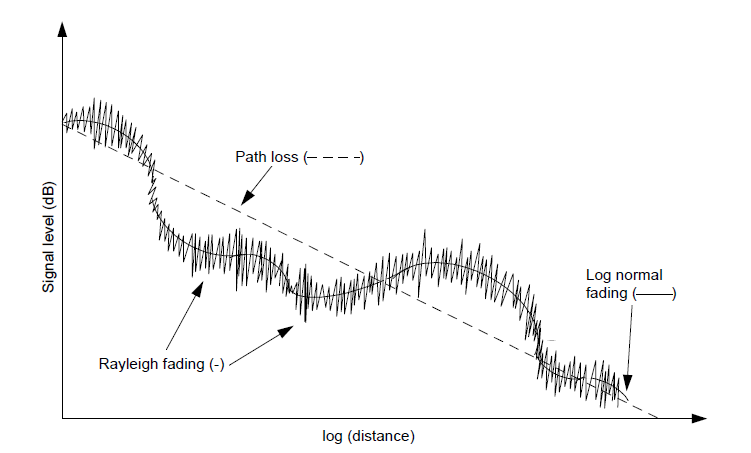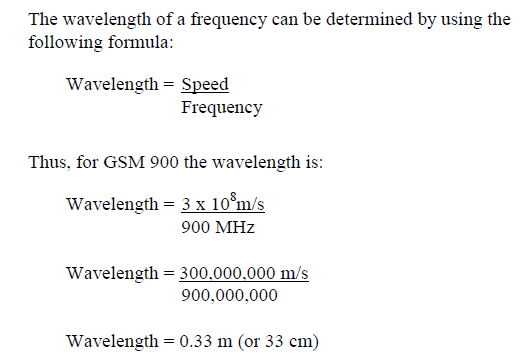This section describes some solutions to the problems described in previous sections. Although many of these do not entirely solve all problems on the radio transmission path, they do play an important part in maintaining call quality for as long as possible.
CHANNEL CODING
In digital transmission, the quality of the transmitted signal is often expressed in terms of how many of the received bits are incorrect. This is called Bit Error Rate (BER). BER defines the percentage of the total number of received bits which are incorrectly detected.
This percentage should be as low as possible. It is not possible to reduce the percentage to zero because the transmission path is constantly changing. This means that there must be an allowance for a certain amount of errors and at the same time an ability to restore the information, or at least detect errors so the incorrect information bits are not interpreted as correct. This is especially
important during transmission of data, as opposed to speech, for which a higher BER is acceptable. Channel coding is used to detect and correct errors in a received bit stream. It adds bits to a message. These bits enable a channel
decoder to determine whether the message has faulty bits, and to potentially correct the faulty bits.
INTERLEAVING
In reality, bit errors often occur in sequence, as caused by long fading dips affecting several consecutive bits. Channel coding is most effective in detecting and correcting single errors and short error sequences. It is not suitable for handling longer sequences of bit errors. For this reason, a process called interleaving is used to separate consecutive bits of a message so that these are transmitted in a non-consecutive way. For example, a message block may consist of four bits (1234). If four message blocks must be transmitted, and one is lost in transmission, without interleaving there is a 25% BER overall, but a 100% BER for that lost message block. It is not possible to recover from this.
Interleaving
If interleaving is used, as shown in Figure 3-18, the bits of each block may be sent in a non-consecutive manner. If one block is lost in transmission, again there is a 25% BER overall. However, this time the 25% is spread over the entire set of message blocks, giving a 25% BER for each. This is more manageable and there is a greater possibility that the channel decoder can correct the errors.
Received interleaved message blocks
ANTENNA DIVERSITY
Antenna diversity increases the received signal strength by taking advantage of the natural properties of radio waves. There are two primary diverstiy methods: space diversity and polarization diversity.
Space Diversity
An increased received signal strength at the BTS may be achieved by mounting two receiver antennae instead of one. If the two Rx antennae are physically separated, the probability that both of them are affected by a deep fading dip at the same time is low. At 900 MHz, it is possible to gain about 3 dB with a
distance of five to six meters between the antennae. At 1800 MHz the distance can be shortened because of its decreased wavelength. By choosing the best of each signal, the impact of fading can be reduced. Space diversity offers slightly better antenna gain than polarization diversity, but requires more space.
Space diversity
Polarization Diversity
With polarisation diversity the two space diversity antennae are replaced by one dual polarized antenna. This antenna has normal size but contains two differently polarized antenna arrays. The most common types are vertical/horizontal arrays and arrays in ±45 degree slant orientation. The two arrays are connected to the respective Rx branches in the BTS. The two arrays can also be used as combined Tx/Rx antennas. For most applications, the
difference between the diversity gain for space diversity and polarization diversity is negligible, but polarization diversity reduces the space required for antennae.
ADAPTIVE EQUALIZATION
Adaptive equalization is a solution specifically designed to counteract the problem of time dispersion. It works as follows:
- Eight sets of predefined known bit patterns exist, known as training sequences. These are known to the BTS and the MS (programmed at manufacture). The BTS instructs the MS to include one of these in its transmissions to the BTS.
- The MS and BTS includes the training sequence (shown in the figure as “S”) in its transmissions.
- The other party receives the transmission and examines the training sequence within it. The received training sequence is compared with the known training sequence that is used in this cell. It can be assumed that problems in the radio path affected these bits must also have had a similar affect on the speech data bits sent in the same burst.
- The receiver begins a process in which it uses its knowledge of what happened the training sequence to correct the speech data bits of the transmission.
Adaptive equalization
Because some assumptions are made about the radio path, adaptive equalization may not result in a 100% perfect solution every time. However, a “good enough” result will be achieved. A viterbi equalizer is an example of an adaptive equalizer.
FREQUENCY HOPPING
As mentioned previously, Rayleigh fading is frequency dependent. This means that the fading dips occur at different places for different frequencies. To benefit from this fact, it is possible for the BTS and MS to hop from frequency to frequency during a call. The frequency hopping of the BTS and MS is synchronized. In GSM there are 64 patterns of frequency hopping, one of them
is a simple cyclic or sequential pattern. The remaining 63 are known as pseudo-random patterns, which an operator can choose from.
Frequency hopping
During TDMA frame N, C1 is used and during TDMA frame N+1, C2 is used. The call uses the same time slot but changes frequencies according to an identified pattern.
TIMING ADVANCE
Timing advance is a solution specifically designed to counteract the problem of time alignment. It works by instructing the misaligned MS to transmit its burst earlier or later than it normally would. In GSM, the timing advance information relates to bittimes. Thus, an MS may be instructed to do its transmission by a
certain number of bittimes earlier or later related to previous position, to reach its timeslot at the BTS in right time. Maximum 63 bittimes can be used in GSM systems. This limits GSM normal cell size to 35km radius. However with extended range equipment, distances up to 70Km or even 121Km can be
handled, using 2 timeslots.
Timing advance


























